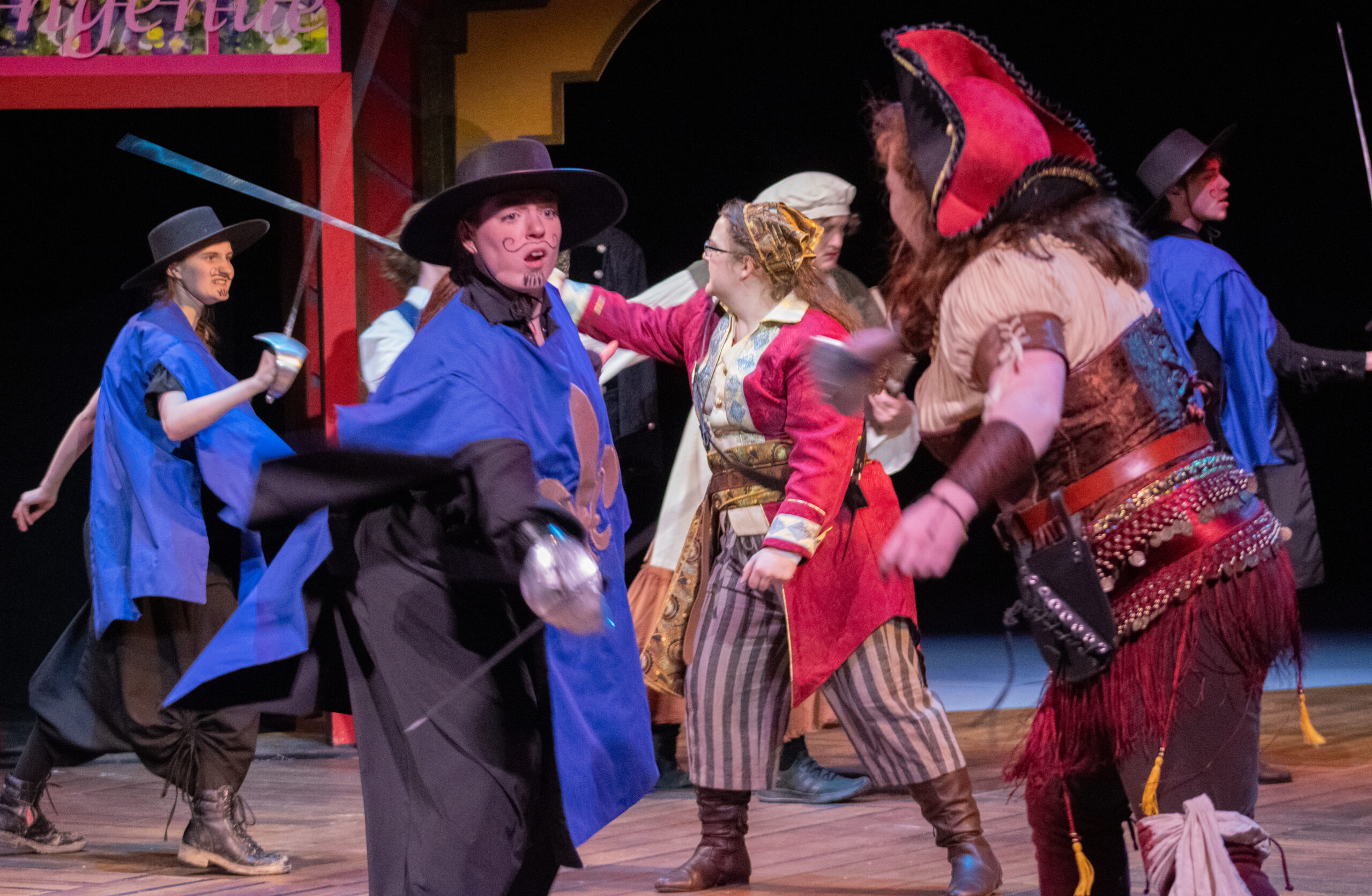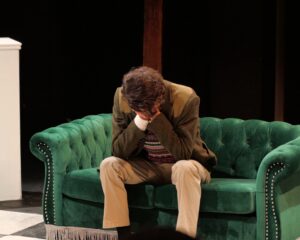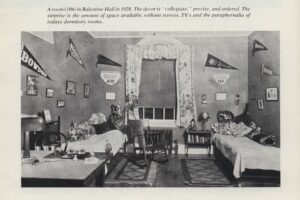Four evening shows and two matinees of “A Pirate’s Life for She” ran at the University of Maine’s Hauck Auditorium from the end of February to the beginning of March. The play promises all the fun of an LGBTQ+ swashbuckling adventure.
Primarily being a pirate comedy a la Gilbert and Sullivan’s “Pirates of Penzance,” the show focuses heavily on queer themes and romances. Unfortunately, in trying to mesh these two aspects, they both end up dead in the water.
Shortly into the show, we are introduced to our main trio of pirates: fashion designer Pierre, played by Josh Worster, first-mate Mary Read, portrayed by Alissa Halloway, and Pirate Queen Anne Bonny, portrayed by Kayla Barton.
Pierre’s primary character traits are made known from his first entrance. Sporting a lavender suit, Worster speaks with a thick — borderline unintelligible during some moments — French accent. Pierre is portrayed as a somewhat stereotypical flamboyant gay man. While Worster did well, their comedic moments also landed, portraying the character’s dramatics with flair and enthusiasm. With this said Pierre does little more than flirt with Jilly, the fourth leading role and the only other designated male role. In moments where Pierre is meant to be serious, it is hard to tell what he is saying under the thick French accent.
This is a recurring issue throughout the show. Jilly is thickly English, and the pirates are, well, pirates. They all play up the accents to the extreme. A lot of dialogue was lost between these accents and poor projection at times. If a sound effect was playing or another noise was present in the theater, it would drown out the actors. What dialogue was left boiled down mostly to jokes based on either sex and innuendos or characters being drunk.
Jilly and Anne act as the show’s protagonists. Anne goes from an obscene drunkard pirate, mourning and angry at the betrayal of a loved one, to appreciate the crew that makes her ship home, as well as her “Soulmatey” Mary. The change is slight but present.
Jilly, on the other hand, starts as a confused, cowardly boy who stumbles into action. By the end, he’s a confused, cowardly pirate who doesn’t actually do anything meaningful in an effort to save others.
In terms of character growth, there really isn’t any. At the end of the show, there’s a scene where Jilly says he prefers that name over Jack, his actual name. While it feels like an allegory for coming out and gender queerness, there’s not actually any progression of Jilly as a character, and even the choice of his name is something decided by those around him. They can’t call him Jack, so they decide on a random name to call him, so none of the agency of the change really belongs to Jilly.
Rounding out much of the cast is Anne’s pirate crew, consisting of a group of five characters: Max, acted by Samuel Mather, Ash, acted by Else Molarsky, Fin, acted by Lauren Poulin, Scout, acted by Blue Schade and Sam, acted by Ryan Whorf.
The group is supposed to be a rowdy but lovable bunch that moves around Jilly and the other characters. They are also the driving force behind the show’s musical numbers, ready to start into a shanty whenever they see an opportunity. The group comes off as annoying at times instead of the endearing they were clearly supposed to be.
They are all fairly one-note characters. Sam is the loud one, Fin is the smart one, Scout is cheerful and energetic, Ash likes food and acts promiscuously. Pierre makes a joke early that their singing gets a little annoying as they first are introduced to Jilly. The show times in at under two hours, and this does prove to be true. The songs fail to be as good as even the sea shanties played before curtains.
Being about pirates and originally written by a fight coordinator, Amie Root, the show has lots of swashbuckling and dueling. Or, is at least supposed to. “Amie wrote this play because the opportunities for women to use stage combat skills is lacking in the repertoire, particularly for this style of swordplay,” said director D. Granke in a release from the UMaine School of Performing Arts.
The style of swordplay used is akin to saber-style fencing. It was also quite lacking. The choreography amounted to the fighting characters beating each other’s blades back and forth, imitating the noise of blade contact that would come with a parry but without any of the movements or tension in an actual fight.
The Pirate Queen Anne was the worst case of this. Within her two duels, as well as other fight scenes, her fighting boils down to meaningless beats, wide slashes, and then simply grabbing the opponent’s sword by the blade when it’s time for her to win the fight. Rather than make her seem the fearsome pirate, Anne only manages to come across as the least incompetent of a fairly bumbling group.













